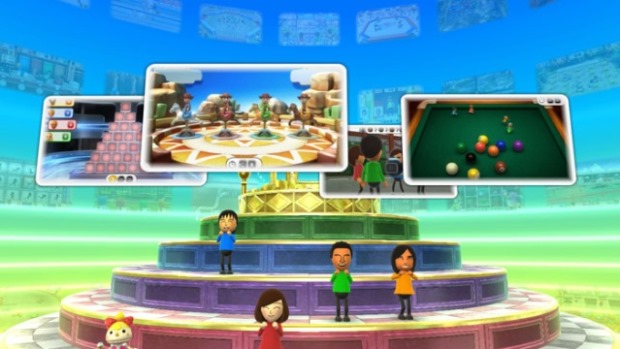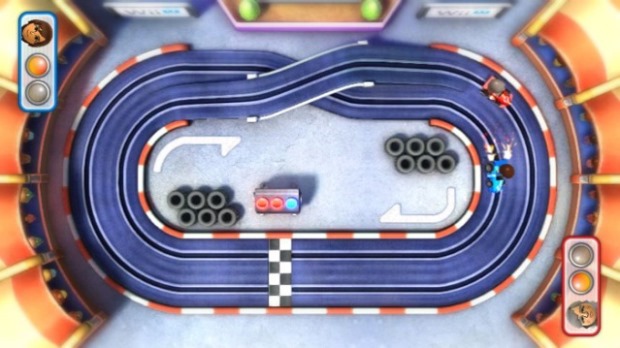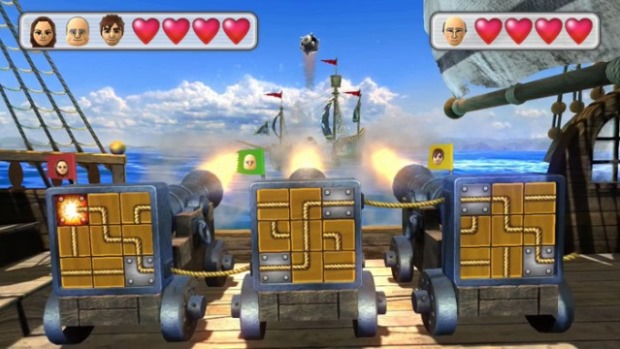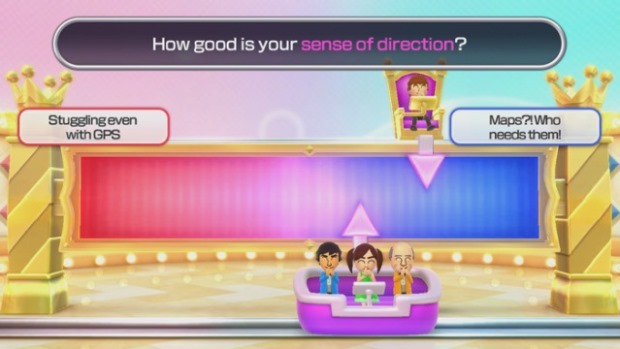Wii Party U Review
Earlier this year, Game & Wario showed us that, while they can be fun and jolly in places, minigame compilations are very much a thing of the past – something that gamers are going to readily associate with the original Wii, whose Wii Sports is still the benchmark for outings of this type. The last thing that the Wii U needs is to be pigeon-holed as a platform for throwaway party games as it struggles to establish its own identity. Which is why it is a crushing, baffling disappointment to find out that in a time when Microsoft and Sony are preparing to drop next generation hardware, Nintendo have decided to release a title that feels like a regressive, backwards step.
Wii Party U is split into three distinct sections: TV Party, which is mostly virtual approximations of board games; House Party, which features a variety of different uses for the GamePad (including dancing around it like a handbag in a seedy nightclub); and GamePad Party, simplistic, GamePad-only concerns that can be played solely using the Wii U’s unique controller. Running through the entire package reveals some 80 extra minigames, which can be played on their own or are employed during the other modes to decide things like who goes first, or how many dice you get to roll during your turn. Everything is anchored by a squeaky voiced host, who resembles a splicing accident involving Jason Donovan’s SCEE Buzz character and an anthropomorphic sex toy. Wearing a top hat.

Where the original Wii Party traded on the party-game popularity of the Wii and had a half decent hit/miss ratio of content, the Wii U sequel is appearing on a device that a large chunk of the populace are unfamiliar with. While there are a shedload of games, there is an awful lot of chaff on display, including a number of activities that, when taken out of their original context, become boring and pointless. Sometimes the short, sharp minigames can be fun and engaging, while others have poorly implemented instructions, or require only the mindless pressing of buttons.
The majority of the TV Party segment is based upon the principles of classic board games. Just as playing any videogame version of Monopoly isn’t half as much fun as playing with a physical set in the living room with the kids, the board games here are somehow soulless, and while they are certainly faster-paced than the played-out Mario Party series, all included are dull, over-long dice rolling games of chance, with the occasional minigame thrown in to the mix. They even sound dreary. “GamePad Island” doesn’t exactly fill you full of the childlike glee Nintendo are famous for.
Mixing things up a touch, The Balldozer attempts to turn a fairground coin pusher into a multiplayer outing, exchanging 2p coins for multi-coloured balls with strange, floaty physics. Ploughing your coppers into an arcade cabinet is one thing when you are in a seaside resort with the sting of vinegar on chips in your nostrils, but here the experience is just anodyne and basic. Similarly trite, Team Building is a bizarre mix of minigames and matching up numbered soccer players like forming a hand in poker.

If the TV Party is a bit of a disappointment, the handheld GamePad shenanigans are generally quite good fun. A simplified version of baseball, which can be played in single player or with a partner clutching the other end of the tablet, is great fun. There is a competent version of table football, and the retro Gauntlet game which will remind those of a certain age of stuff like Mousetrap and other Xmas faves you enjoyed as a kid. The sad reality is that there is probably nothing here that you couldn’t find a cheaper version of on an Android or iOS device.
The games under the House Party banner are supposed to be where the unique capabilities of the console are best put to use, and instantly the most intriguing and visually appealing of these games is Water Runners. You are asked to place the GamePad on a flat surface a good distance away from the TV screen. The small screen then displays a beautifully rendered trickling stream of water, and your job is to use the Wiimote as a scoop to pick up water and place it into containers shown on the television. The idea is that by placing the GamePad away from the TV, the players will be effectively fetching and carrying “water” toward the vessels. This is a clever and novel idea, and thanks to the precision of the Motion Plus it actually seems to work rather well, yet most people won’t have enough room to execute this properly in their lounge, and it does become very boring, very quickly, due to its simple nature.

Name that Face asks you to snap a picture of your visage using the controller, and then challenges your friends to guess which expression you are supposed to be displaying. It has the best comedic potential out of everything Wii Party has to offer, closely followed by the vaguely Pictionary-esque Sketchy Situation – in which you pass the controller around and are each asked to draw a picture – with the twist coming in that one person is told to draw something completely different. The comedy and appeal comes from the proven fact that everyone – kids and adults alike – seem to be utterly abysmal at drawing things to order when placed under duress.
Lost and Found Square is hugely reminiscent of similar hide and seek fare from the superior Nintendoland, as a GamePad wielding player hides and then attempts to lead the other Wiimote-clutching folk to their location by describing the surroundings. Do U Know Mii? Features a basic multiple choice “personality test” in which other players are asked how well they know their friends, and soon becomes irritating and has potential for inter-personal bickering. Button Smashers is a Simon Says-style affair in which you aim to press buttons in a correct sequence on both the GamePad and any synced Wiimotes.

Wii Party U, and indeed Nintendo as a whole, reaches its horrific nadir with Feed Mii, a worryingly insulting non-game which places the GamePad-holder in the unenviable role of a server in a fast food joint. The menu is displayed on the television screen, and the other players – in the role of the customers – have to simply bark their orders verbally, with the lucky GamePad chap using the touch screen to accurately select the items and place them against the correct Mii character. Each customer then gets the opportunity to check the order and rate it using one of three emoticons. And that’s it. Someone delivers a verbal command for a cheeseburger and you tap the picture of a cheeseburger, then that person gets to tap a picture of a pink smiley face. How has it come to this?
VERDICT: There is so much to love about the Wii U. For one, seeing the glorious technicolour of Nintendo in HD never gets dull, and in that respect, Wii Party U gets things spot-on – it looks terrific. Unfortunately the core game underneath the gloss and stacks of features is no better than the first Wii Party – and in many ways is actually worse. 80 minigames had better have a good strike-rate or they become a procession of annoying interludes; there are only so many ways you can throw a dice and move around a track.
The best that the game has to offer can easily be experienced elsewhere – sometimes with a basic pen and paper. When you find that a party game is becoming a chore, or that it actually insults your intelligence as a human being, then it is time to switch off. If you want to have some fun with family or friends, then you are better served sticking with one of the original Wii Sports titles, which several years on are still the most fun you can have with a Wiimote.

POOR. Games tagged 4/10 will be playable, perhaps even enjoyable, but will be let down by a slew of negative elements that undermine their quality and value. Best avoided by any but hardcore genre fans.




